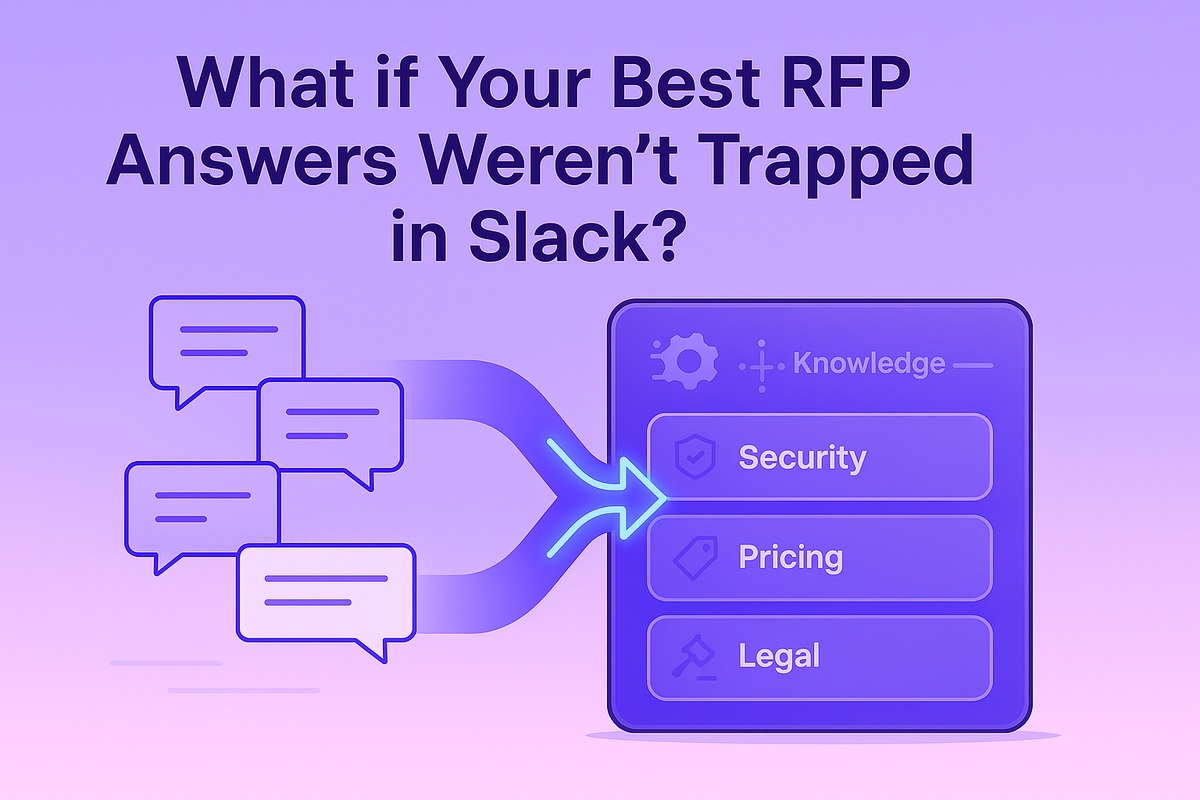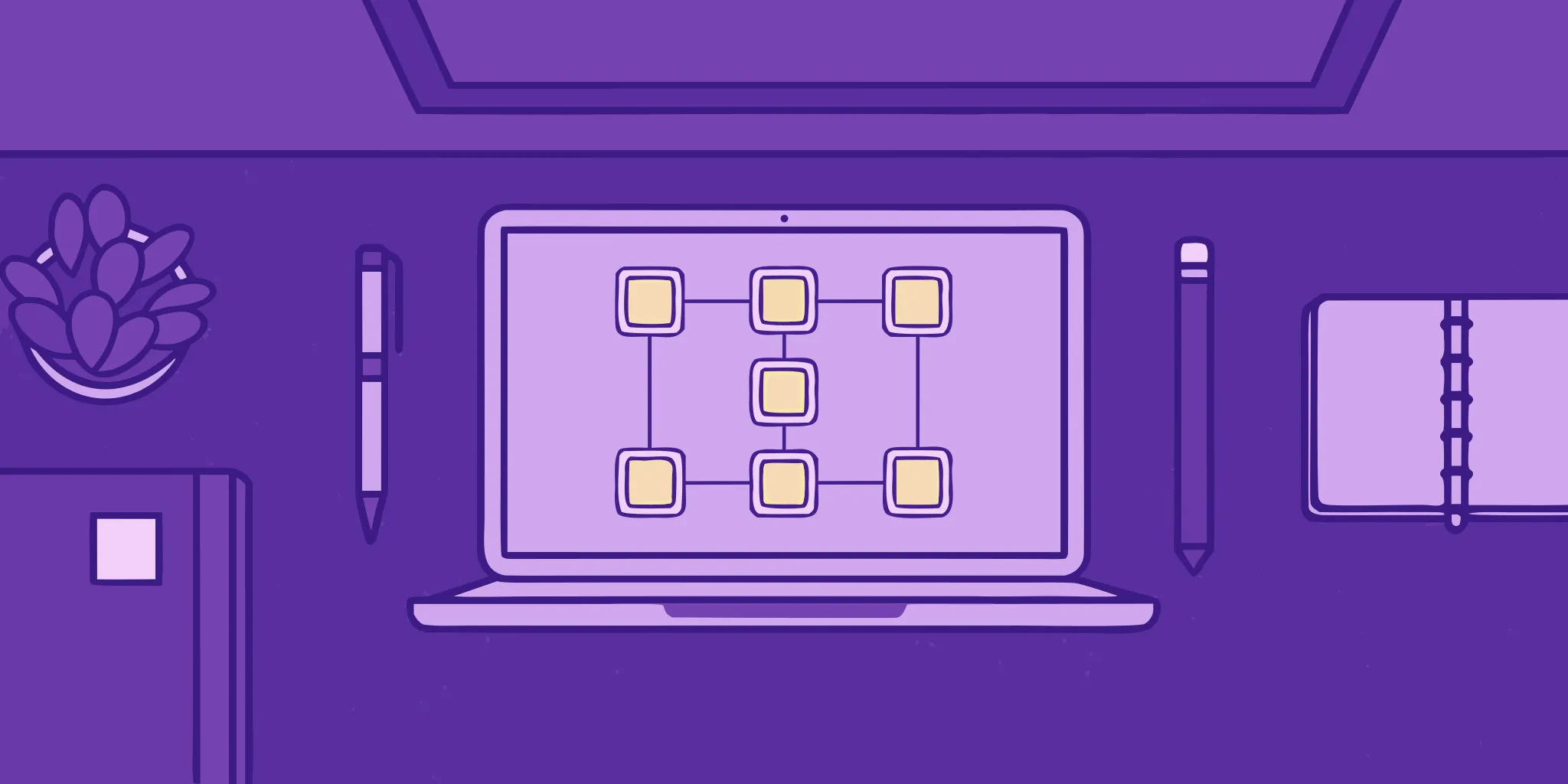Artificial Intelligence Procurement Software: A Guide
October 24, 2025
By
Evie Secilmis

Procurement has come a long way from spreadsheets and manual approvals.
Today’s teams are managing hundreds of vendors, compliance checks, and contract renewals — all while navigating tighter budgets and higher expectations.
Enter AI procurement software: intelligent systems that bring automation, insight, and consistency to the entire procurement process.
Just like proposal automation, AI-driven procurement doesn’t replace humans — it empowers them to make better, faster, and more strategic decisions.
Defining AI Procurement Software
AI procurement software uses artificial intelligence to streamline and optimize how organizations source, evaluate, and manage vendors.
It integrates data from multiple sources — RFPs, security questionnaires, performance metrics, and contracts — to provide real-time insights that support every stage of the procurement lifecycle.
Think of it as a digital partner that helps procurement teams:
✅ Identify the right vendors faster.
✅ Score proposals objectively.
✅ Ensure compliance with company and regulatory standards.
✅ Predict risks before they become costly problems.
✅ Reduce time spent on manual reviews and documentation.
At its core, AI procurement software transforms decision-making from reactive to predictive — allowing teams to focus on strategy instead of admin.
How AI Enhances Each Stage of Procurement
- Vendor Discovery
AI tools analyze databases, supplier networks, and even social data to recommend qualified vendors that match your goals, certifications, and compliance requirements. - RFP Management
Instead of managing submissions manually, platforms like Iris can automate scoring, extract key data from proposals, and flag inconsistencies instantly. - Evaluation and Scoring
AI-powered scoring models reduce bias by comparing vendors against pre-defined, data-backed criteria — similar to the frameworks in RFP evaluation. - Contract and Risk Management
Natural language processing (NLP) can scan contracts for risky clauses or missing obligations, giving procurement teams proactive control over compliance and renewals. - Performance Tracking
Post-award, AI continuously monitors vendor KPIs, delivery timelines, and cost efficiency — turning procurement into an ongoing process of improvement rather than a one-time transaction.
Why AI Procurement Software Matters Now
Procurement teams face a perfect storm of challenges — global supply chain shifts, new data regulations, ESG expectations, and budget scrutiny.
Traditional systems can’t keep up.
AI procurement software enables:
- Speed: Automated analysis shortens vendor selection timelines.
- Transparency: Objective scoring and audit trails build trust internally.
- Compliance: Systems cross-check data against SOC 2, GDPR, and ISO 27001 frameworks automatically.
- Collaboration: Integrations connect legal, finance, and IT stakeholders in real time.
The result?
Faster procurement cycles, lower costs, and stronger relationships with vendors who align to your business goals.
AI Procurement in Action
Consider how AI supports a typical RFP workflow:
A procurement team issues an RFP to evaluate five software vendors.
Instead of manually reviewing 200-page responses, AI:
- Extracts and categorizes every question.
- Scores answers based on compliance and completeness.
- Highlights risk areas and missing documentation.
- Generates a summarized comparison dashboard.
What used to take weeks can now take days — with traceable, data-driven reasoning behind every recommendation.
This same technology powers security questionnaire reviews, supplier audits, and vendor onboarding workflows.
AI + Human Collaboration: The Real Advantage
Like every automation trend, AI in procurement works best when it complements human judgment.
AI identifies the “what” — patterns, risks, scores.
Humans decide the “why” — context, relationships, and strategy.
Together, they create a process that’s both intelligent and intentional.
It’s the same philosophy that drives proposal automation: let technology handle the heavy lifting, so people can focus on persuasion, insight, and creativity.
Choosing the Right AI Procurement Tool
When evaluating AI procurement platforms, look for tools that offer:
- Automated RFP and vendor evaluation workflows.
- Integration with your ERP, CRM, and contract management systems.
- Customizable scoring criteria that align with your procurement policies.
- Compliance alignment with frameworks like SOC 2 or ISO 27001.
- Analytics dashboards that track savings, efficiency, and vendor risk.
The best tools — like Iris — act as a centralized hub where procurement, finance, and legal teams work in sync, turning data into action.
Final Thoughts
AI procurement software doesn’t replace procurement professionals.
It amplifies their judgment, accelerates decisions, and enforces consistency across every deal.
As procurement evolves from cost control to strategic enablement, AI will be the bridge between efficiency and intelligence — ensuring every vendor decision is informed, auditable, and aligned with business goals.
And the organizations that embrace it early will move faster, spend smarter, and build trust at scale.
Related Articles
Share this post
Link copied!




















